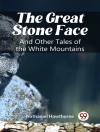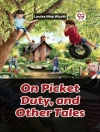Some years ago I was at work in Salzburg: in the library among the old records, and in the Museum of Roman antiquities.
My studies were principally concerned with the fifth century: the time when the Germanic tribes invaded these regions, the Roman garrisons retiring with or without resistance, while many settlers remained in the land. Peasants, trades-people, mechanics, would not forsake their homes, nor give up their lucrative occupations, would not quit their valued, long-cherished plots of ground, but stayed under the rule of the Barbarian; who, when the storm and battle of conquest were over, and the division of the country completed, did not molest them.
The work of the day over, I wandered in the beautiful, long-familiar country of the Salzach valley; the warm June evenings permitted long wanderings up to a late hour. Thought and fancy were filled with the pictures of the life and the changing fate of the latest Romans in these lands. My imagination was excited by the inscriptions, coins, and utensils, by the Roman monuments of every kind which are found in such rich abundance in and around Salzburg; for this town, with its prominent fortress, the ‘Capitolium, ‘ on the rocky hill dominating stream and valley, was for centuries, under the name of ‘Claudium Juvavum, ‘ a chief bulwark of the Roman rule and the seat of a flourishing and brilliant development of the Roman culture. The inscriptions testify to the official rank of many of the citizens, such as Duumvirs, Decurions, Ædiles of the markets and games; to the importance of the town as a place of trade, and to the encouragement given to the arts and manufactures…












